ROOM: The Space Journal is one of the leading magazines on space exploration, technology and industry. At ROOM, we share a common dream – promotion of peaceful space exploration for the benefit of humankind, all while bringing you throughly researched articles on an array of interesting topics. Our authors include analysts and industry leaders from all over the world, which lets us bring you the newest and comprehensive information about kepler telescope exoplanet.
 May 2022
Essential guide to the James Webb Space Telescope
May 2022
Essential guide to the James Webb Space Telescope
... filters and also some coronographs, used to block out stellar light when studying exoplanets. NIRCam was used to initially focus the telescope, part of the ongoing six-month commissioning phase, which began at the end ... instruments can be used simultaneously, greatly enhancing the amount of science the telescope can perform. First year of science With over 5000 known exoplanets, we are progressing from the Era of Discovery to the Era of ...
 April 2019
Scanning the skies for exoplanets
April 2019
Scanning the skies for exoplanets
... orbit their host stars in 13 days or less; these are considered short orbital period exoplanets. Conversely, Kepler was adept at finding exoplanets with orbital periods from 10 days up to a few hundred days, a feature that ...already captured 100 short-lived changes; six of these were supernovas picked up by TESS before ground-based telescopes had a chance to detect the ultra-luminous outpourings of light typical of these exploding stars. With ...
 August 2018
Exoplanet census promises radical discoveries
August 2018
Exoplanet census promises radical discoveries
...the first exoplanet discovery (by Swiss astronomers, Michel Mayor and Didier Queloz) of a half-Jupiter-mass planet orbiting the star 51 Pegasi on a four-day orbit to the remarkable discoveries of NASA’s Kepler space telescope, progress... has been rapid and surprising. The vast majority of the more than 3,700 known exoplanets are unlike any of the planets in our solar...
 November 2018
How many people does it take to colonise an exoplanet?
November 2018
How many people does it take to colonise an exoplanet?
.... Located at 4.2 light years (40,000 billion km), Proxima Centauri b is almost an ideal destination - as far as exoplanets go. But while this distance may be small by astronomical standards, it remains utterly vast on the human scale. The...Sciences in Prague. He specialises in radio astronomy and spent two years at the Arecibo radio telescope in Puerto Rico. His main scientific interest is galaxy evolution, particularly galaxies which contain large...
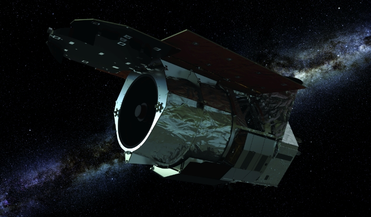 20 March 2019
Webb telescope partly blamed for WFIRST funding cut
20 March 2019
Webb telescope partly blamed for WFIRST funding cut
... its development. No science or technology roadblocks. Just a decision not to fund,” he wrote, pointing out that the telescope is “on schedule to an on budget launch. All of the technologies are ready to go.” Designed with the sensitivity of ...for me, as your NASA administrator, to go up to [Capitol] Hill and talk about the James Webb Space Telescope,” said the agency’s top official, Jim Bridenstine, in a speech March 11. “Some of you might have ...
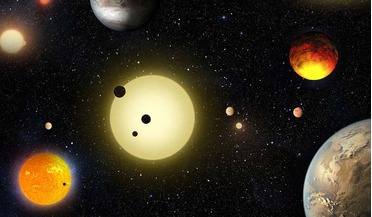 11 May 2016
Kepler scientists announce a major increase in confirmed exoplanet numbers
11 May 2016
Kepler scientists announce a major increase in confirmed exoplanet numbers
... day, 7 days a week, 365 days a year looking for the tell-tale sign of a would be exoplanet. The technique Kepler uses is known as the transit method and it works by measuring the dip in star light as a planet ...away at least 60 - 70 percent of the transit-like signals that the telescope recorded.” The outlook for exoplanet surveys improved dramatically with the launch of Kepler and within its first few months of data gathering, hundreds of transit...
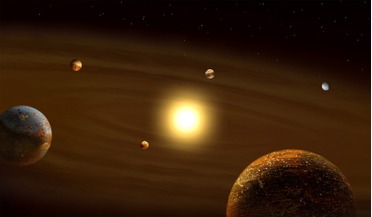 27 July 2019
Hundreds of new planet candidates detected by Kepler
27 July 2019
Hundreds of new planet candidates detected by Kepler
...a year in space scanning the skies in the Southern Hemisphere, NASA’s latest planet hunting telescope TESS (Transiting Exoplanet Survey Satellite) has helped astronomers discover a bumper haul of 21 planets outside our solar system...not the only one making substantial discoveries. Although now officially retired, NASA’s first formidable exoplanet telescope – Kepler – has gone one better. Make that a few hundred better. By scanning through eight...
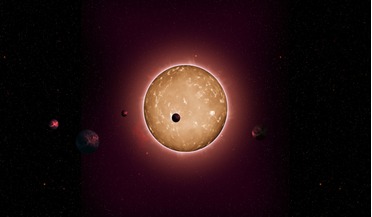 24 November 2021
Astronomers discover more than 350 possible new exoplanets
24 November 2021
Astronomers discover more than 350 possible new exoplanets
... identified 366 new exoplanets and 17 new multi-planet systems, including one with two Saturn-sized gas giant planets located unusually close to one another. Launched by NASA on 7 March, 2009, the Kepler space telescope has in its...around smaller, dimmer red dwarf stars instead. Dubbed K2, this “Second Light" mission lasted as long as Kepler’s first exoplanet hunt and bumped its count of surveyed stars up to more than 500,000. But, after nine years...
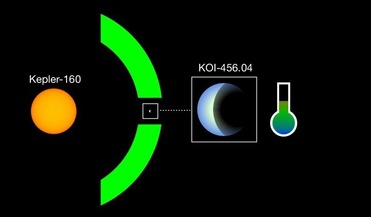 05 June 2020
Exciting exoplanet find around sun-like star
05 June 2020
Exciting exoplanet find around sun-like star
...is not new. It was discovered around ten years ago, followed by the confirmation of two exoplanets, called Kepler-160b and Kepler-160c, four years later. Both of these planets though are substantially bigger than Earth and ... obtaining a formal planetary status requires 99 percent certainty – some of the Earth’s most powerful ground-based telescopes might be able lend a hand in validating this candidate. Otherwise the team will have to wait for the...